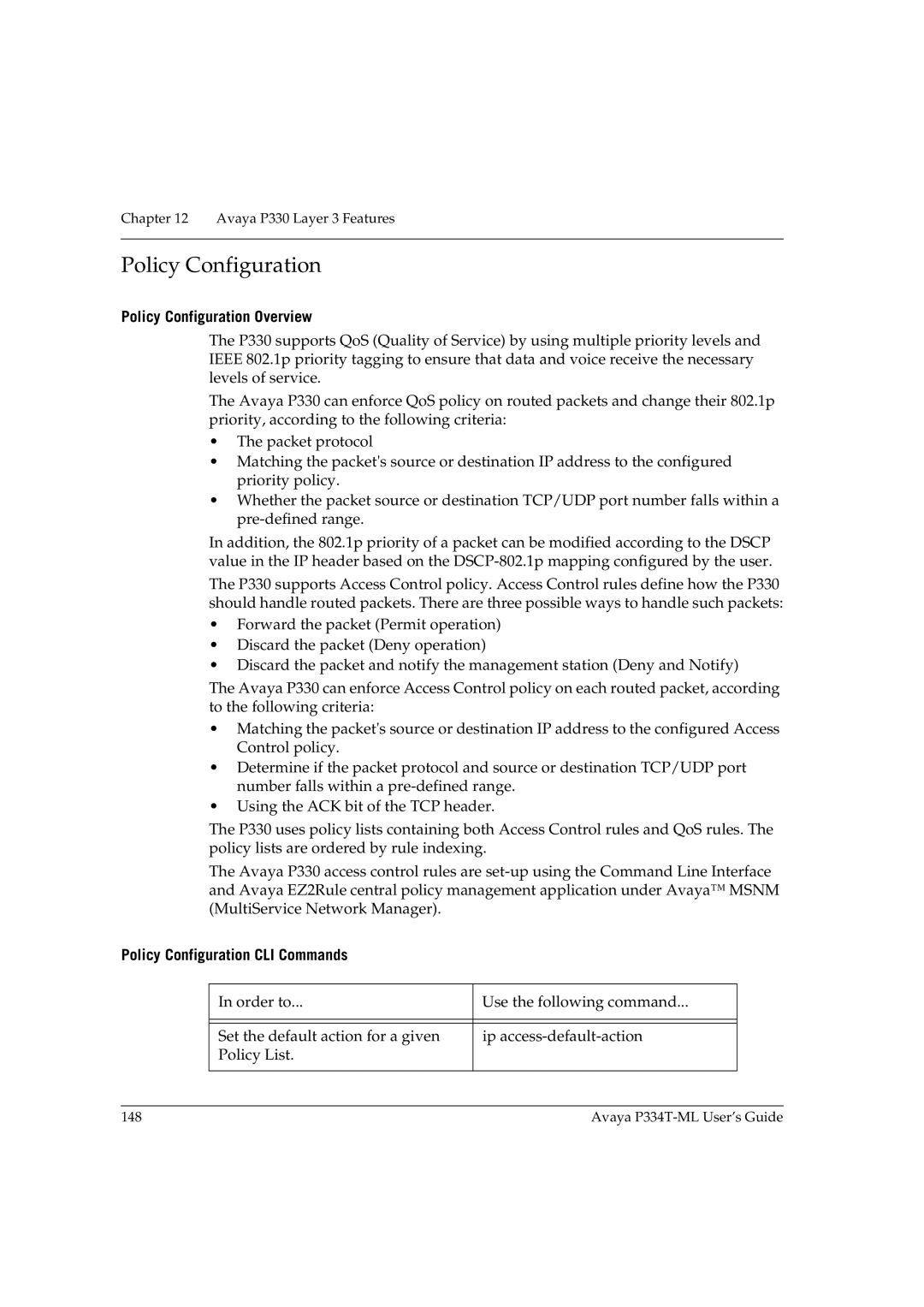
Chapter 12 Avaya P330 Layer 3 Features
Policy Configuration
Policy Configuration Overview
The P330 supports QoS (Quality of Service) by using multiple priority levels and IEEE 802.1p priority tagging to ensure that data and voice receive the necessary levels of service.
The Avaya P330 can enforce QoS policy on routed packets and change their 802.1p priority, according to the following criteria:
•The packet protocol
•Matching the packet's source or destination IP address to the configured priority policy.
•Whether the packet source or destination TCP/UDP port number falls within a
In addition, the 802.1p priority of a packet can be modified according to the DSCP value in the IP header based on the
The P330 supports Access Control policy. Access Control rules define how the P330 should handle routed packets. There are three possible ways to handle such packets:
•Forward the packet (Permit operation)
•Discard the packet (Deny operation)
•Discard the packet and notify the management station (Deny and Notify)
The Avaya P330 can enforce Access Control policy on each routed packet, according to the following criteria:
•Matching the packet's source or destination IP address to the configured Access Control policy.
•Determine if the packet protocol and source or destination TCP/UDP port number falls within a
•Using the ACK bit of the TCP header.
The P330 uses policy lists containing both Access Control rules and QoS rules. The policy lists are ordered by rule indexing.
The Avaya P330 access control rules are
Policy Configuration CLI Commands
In order to... | Use the following command... |
|
|
|
|
Set the default action for a given | ip |
Policy List. |
|
|
|
148 | Avaya |
